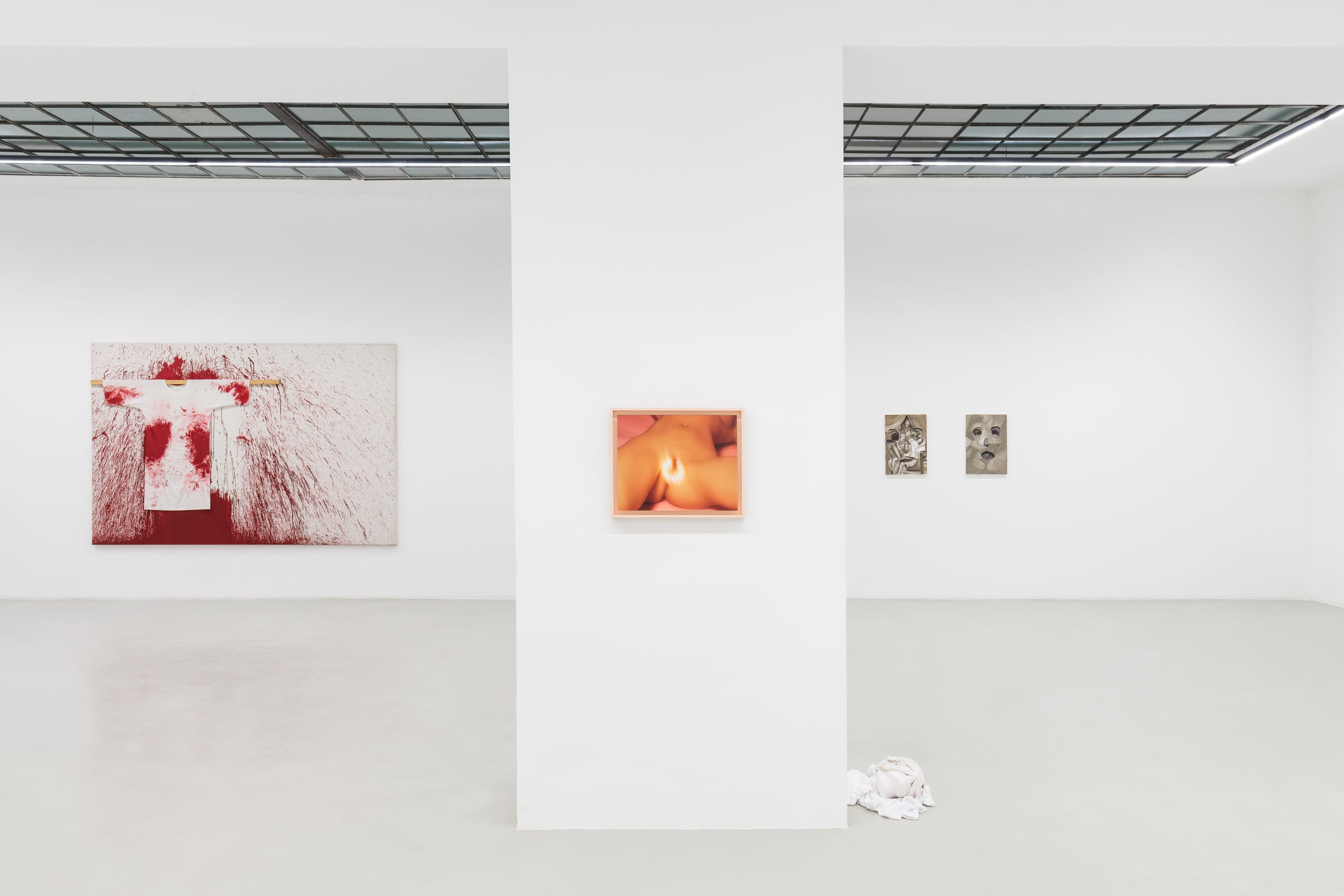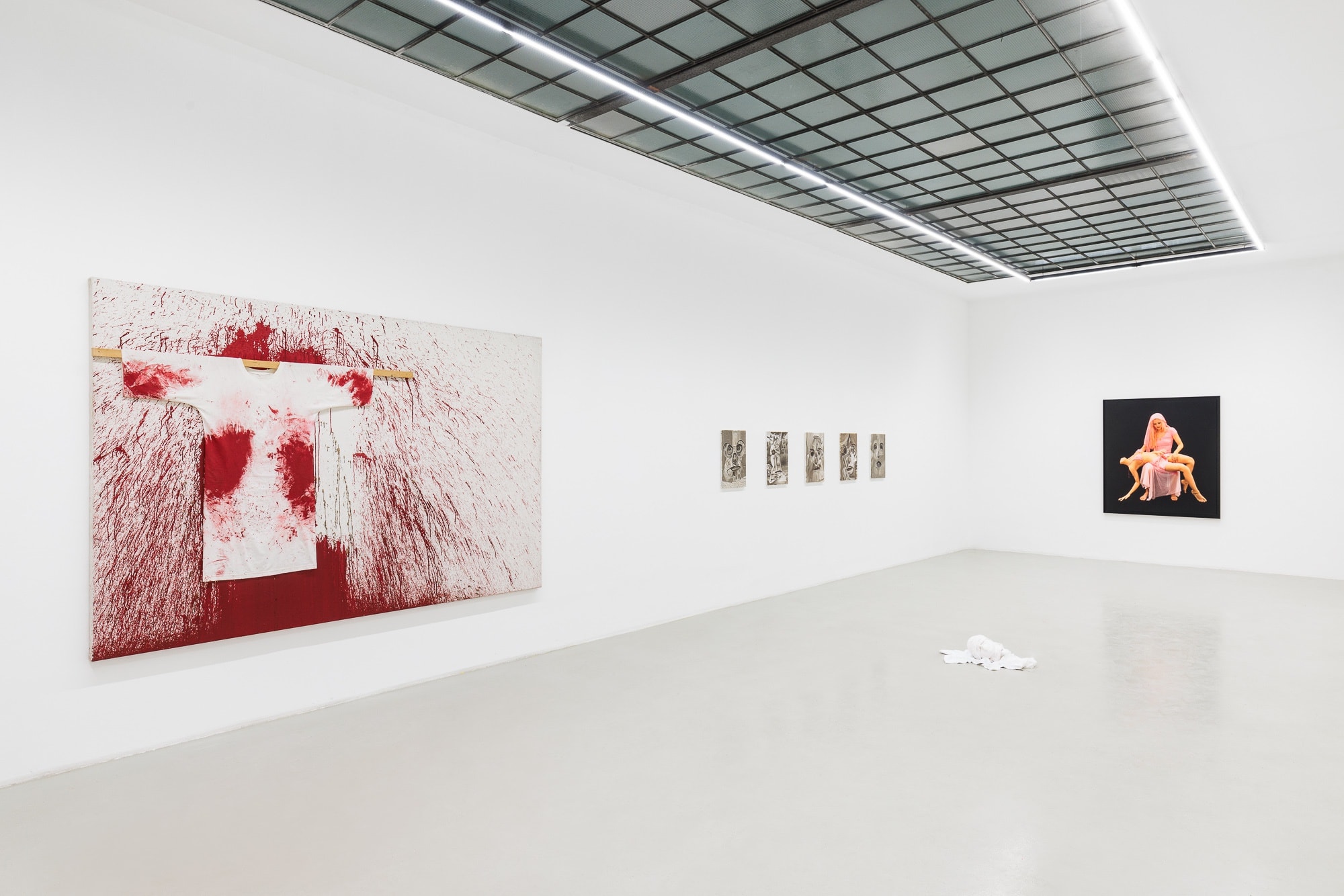-
Weltgeist
curated by Bjorn Stern -
Curated by Bjorn Stern for Galerie Kandlhofer, the exhibition “Weltgeist” opening on January 18 will aim to explore the power of humanism and how it has equipped itself through history to fathom the enormity of not knowing the fundamentals of its own existence, which has caused ideologies, governmental systems, religiosity and other belief systems to function in its ersatz. Stern has included seven international artists whose respective practices illuminate the subject. Janine Antoni - USA, Reza Aramesh - IRAN/U.K., Arvida Byström - SWEDEN, Alejandro Jodorowsky - CHILE/FRANCE, Hermann Nitsch, AUSTRIA, John Robinson, U.K. and Penny Slinger - USA.The exhibition is loosely based on the principles of Hegel’s views on the Weltgeist (World spirit), not as an actual object or an all-encompassing, all-present God figure, but as a secular means to better understand and to philosophise about history.
-
-
At the core of my curatorial proposal, with the contributions of seven contemporary international artists, rest the Sisyphean problem with the enormity of us not knowing the fundamentals of our own existence. It is at times a mundane question and sometimes a stupid question and at times a dramatic question. But it is a question since the beginning of consciousness, helped by the advent of language, which has caused ideologies, systems of governance, religiosity and other belief systems to flourish in its ersatz. Humanity can ascertain its biological existence through the clarity offered by science and it can explain its utility through empirical means, such as the evolution of our species, our urge to reproduce and to the need for self preservation. But it cannot explain its purpose. For that question to become meaningful, one can be helped by the many means of speculation that we have invented or discovered for ourselves. Philosophy, at times, can help and in this particular exhibition - a view through the eyes of artists, grappling with the same question.The spirit of the world Weltgeist as supposed to the spirit of the time Zeitgeist, speak of a connected humanity. The Zeitgeist speak only of the results of such connectedness. The Hegelian view, for those who have yet to explore his philosophies, speak of the Weltgeist not as an actual object or an all-encompassing, all-present God figure, but as a means to better understand and to philosophise about history. Hegel proposed that the Weltgeist always had representatives in the shape of Volksgeister, the great people of history, who could be relied upon to determine the future and thus circumnavigate the more speculative and in the age of reason and empiricism of the nineteenth century, less appealing application of superstition and religiosity to his famous thesis that “what is real is reasonable”. The future as revealed by the Volksgeister would simply be inevitable.And what futures do artists imagine? In my view, they may represent the Volksgeister of our time. Artists operate with the self and the mediation of self examination much in the same way as many of the great people of history, the Volksgeister, did, who honed carefully crafted legacies and mythologies on a world scale, whereas artists create such worlds for themselves.Text by curator Bjorn Stern
-
 Janine Antoni, I open the gates, 2019, Mixed media gilded with 24 karat gold leaf, 58.42 x 65.72 x 5.72 cm23 x 25 7/8 x 2 1/4 inches, Edition of 3 plus 2 artist's proofs (#2/3), (C35697), © Image Credits to Ralph Smith
Janine Antoni, I open the gates, 2019, Mixed media gilded with 24 karat gold leaf, 58.42 x 65.72 x 5.72 cm23 x 25 7/8 x 2 1/4 inches, Edition of 3 plus 2 artist's proofs (#2/3), (C35697), © Image Credits to Ralph Smith -
 Installation View, Weltgeist - curated by Bjorn Stern, 2023, credits to Manuel Carreon Lopez
Installation View, Weltgeist - curated by Bjorn Stern, 2023, credits to Manuel Carreon Lopez -

Arvida Byström, Pietà, 2022, Photographic print, 160 x 136 cm, 63 x 53 1/2 in, 3 editions 2 ap, courtesy of the artist
-

Reza Aramesh, Study of the Head as Cultural Artefacts, 2016, Hand Carved, polished Carrara Marble, 45 x 25 x 25 cm, credits to Manuel Carreon Lopez
-

John Robinson, Seance, 2022, Oil on canvas, 114 x 146 cm, courtesy of the artist
-

Hermann Nitsch, Schüttbild, 1987, Acrylic on Canvas, 111 x 90 cm, credits to Manuel Carreon Lopez
-
 Installation View, Weltgeist - curated by Bjorn Stern, 2023, credits to Manuel Carreon Lopez
Installation View, Weltgeist - curated by Bjorn Stern, 2023, credits to Manuel Carreon Lopez -

Penny Slinger, Alchemy and Ecstasy, 1976 - 1977, Collage on Board, 44 x 58 cm, 17 3/8 x 22 7/8 in, Framed: 61.6 x 75.6 x 4.1, (PSL 135), courtesy of Blum and Poe Gallery
-
-
About the curator
Bjorn SternStern is a London based art dealer and collector, who has curated a number of thematic exhibitions in the past three decades on subjects as varied as the history of dreams in art through five millennia, the art of the first Italian republic, how artists respond to the history of competitive sports and in the late 90’s Stern curated the “In-Significant’s” exhibition in Malmoe, Sweden, which predicted post-internet art by over a decade. More recently he has taken an interest in the digital abject in art and its’ effect on real life situations.
Weltgeist: group exhibition curated by Bjorn Stern
Past viewing_room















